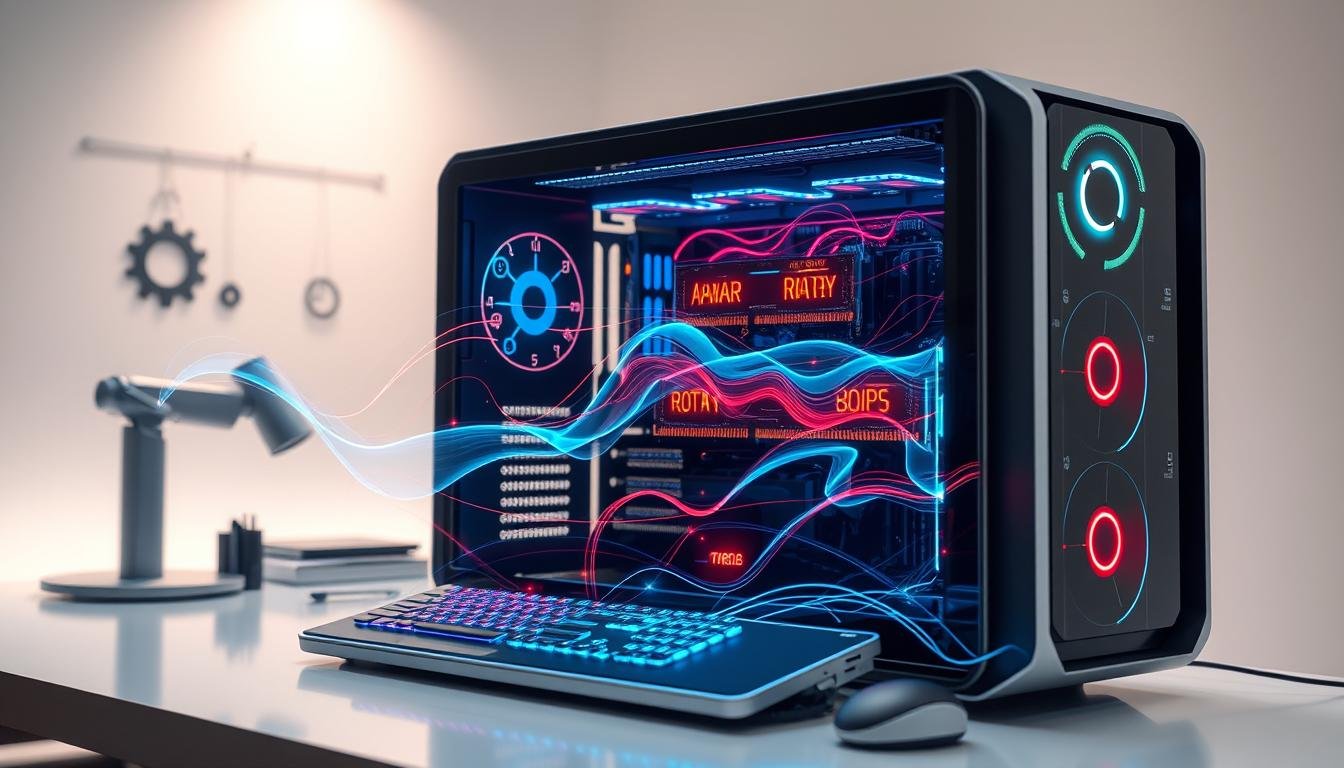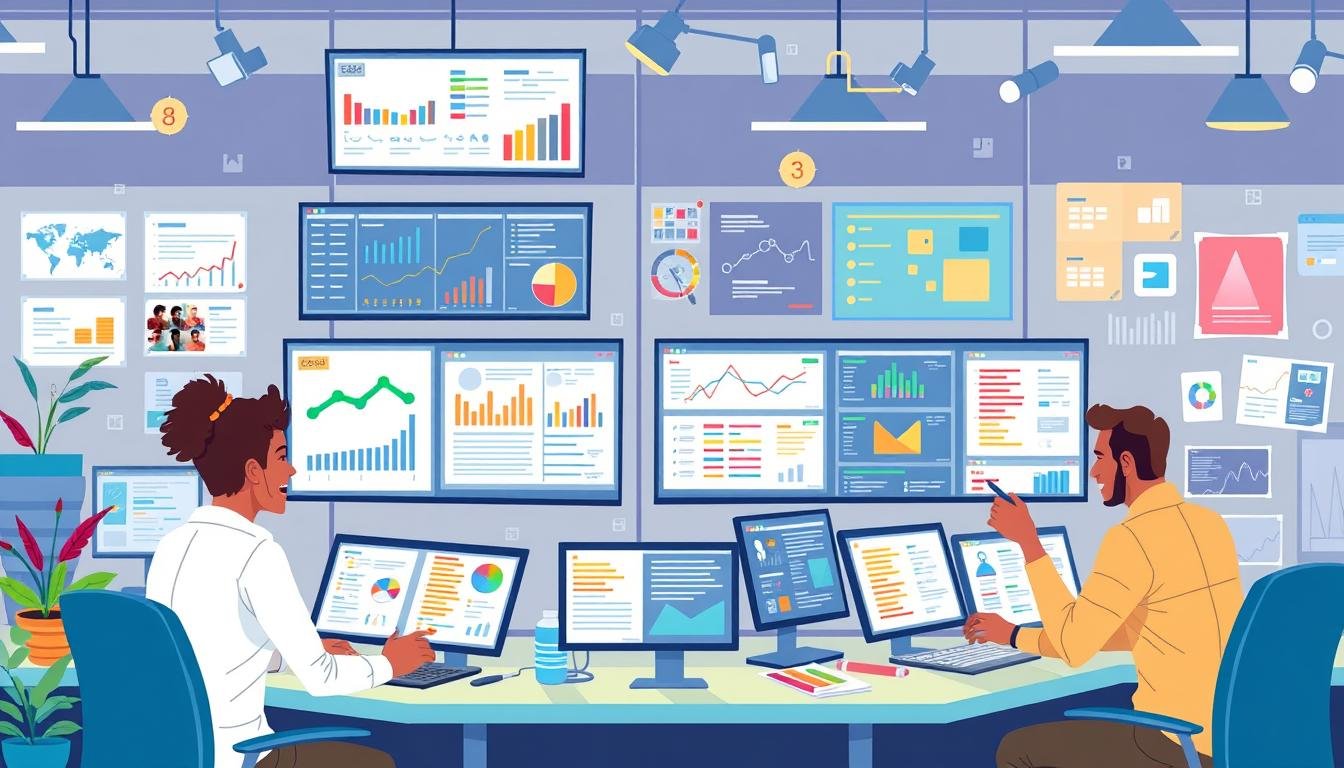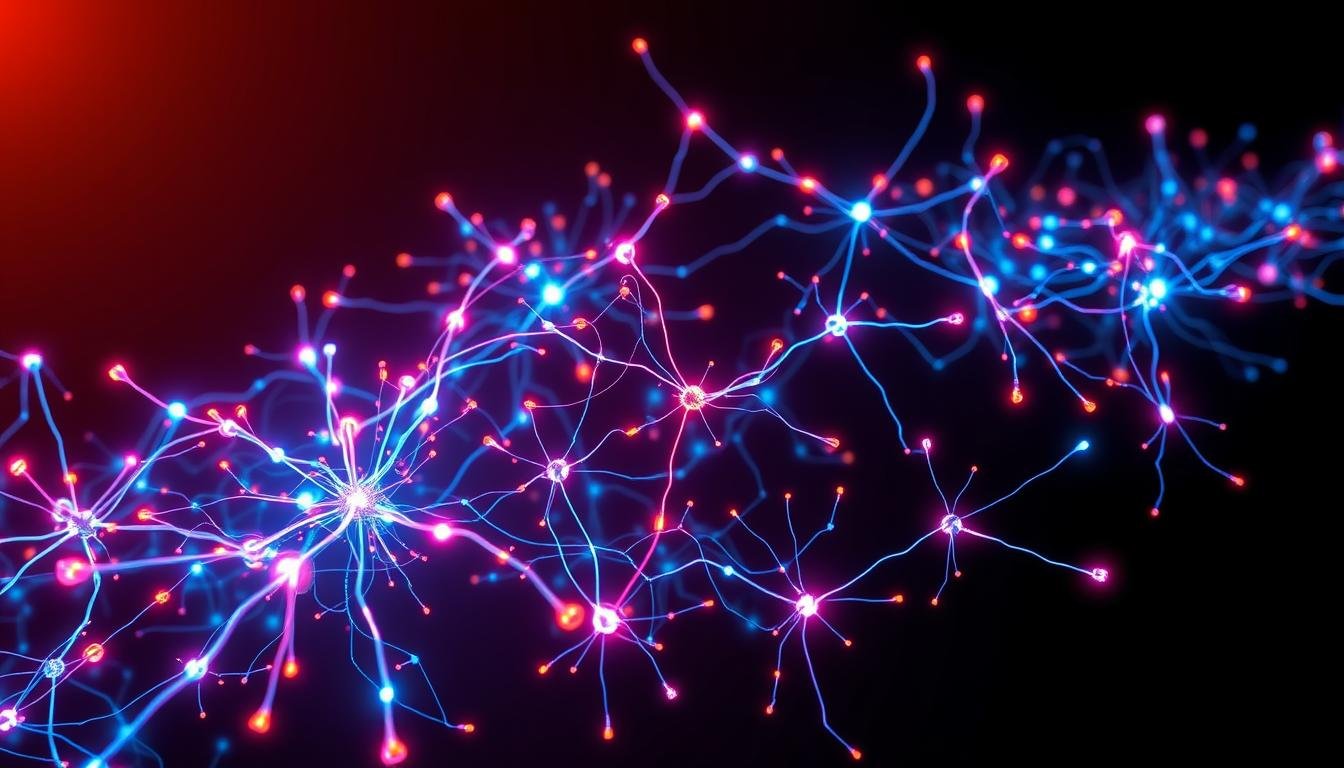In today’s fast world, our computers handle many tasks at once. This includes everything from work apps to streaming and web browsing. To keep your computer running smoothly, managing your RAM is key. RAM is where your computer stores short-term data, making multitasking easy.
When your RAM is full, your computer slows down. This can lead to annoying lags, crashes, and trouble running apps together.
In this guide, I’ll share simple tips to free up RAM on your computer. These tips work for both Windows PCs and Macs. By following these steps, you can make your system run better. This means a smoother, more enjoyable computing experience. Let’s explore how to maximize your computer’s memory.
Key Takeaways
- RAM is essential for running multiple applications simultaneously and maintaining optimal computer performance.
- Insufficient RAM can slow down your computer, cause program crashes, and hinder multitasking.
- Various techniques, such as restarting your device, closing unused apps, and disabling unnecessary background processes, can help free up RAM.
- Updating software, uninstalling unused programs, and adjusting visual effects can also improve RAM management.
- Optimization software and system tools can streamline RAM usage and enhance overall system performance.
What is RAM and Why is it Important?
RAM, or Random Access Memory, is the heart of your device’s memory. It holds the active tasks your computer is doing right now. The more RAM, the better your computer can handle many tasks at once.
Understanding the Role of RAM
RAM gives you fast access to data, much quicker than hard disks or SSDs. This speed is key for your computer to work smoothly and fast.
For basic tasks, 4GB of RAM is enough. But for more, like gaming or video editing, you need 16GB or more. Today’s computers can have up to 64GB of RAM for the most demanding tasks.
RAM and Its Impact on Computer Performance
Too much RAM usage can slow your computer down. It might crash programs or struggle with many apps open. This is really annoying and wastes a lot of time.
Not having enough RAM makes your computer use virtual memory. This is much slower and can cause crashes. So, keeping RAM free is crucial for your computer’s speed and performance.
Quick Ways to Free Up RAM
Want to make your computer run faster? One simple way is to free up some RAM. RAM is where your computer stores data temporarily. When it’s full, your computer slows down. But, there are easy steps to get your RAM back.
Restart Your Computer
Restarting your computer is a quick fix. It clears out RAM and starts programs fresh. This helps get rid of background apps that use up RAM.
Close Unused Applications
Another way to free up RAM is to close unused apps. Apps running in the background can still use RAM. Look for apps you’re not using and close them to free up memory.
Managing your RAM well keeps your computer fast. By restarting and closing unused apps, you can quickly boost your RAM management. This makes your computer run smoother and faster.
How to Free Up RAM on Your Computer: Easy Tips for Better Performance
If your computer feels slow, it might need more RAM. RAM is key to your system’s speed. I’ll show you simple ways to free up RAM and make your computer faster.
Start by restarting your computer. This can fix memory problems and free up RAM. Next, check the apps you have open. Close any unused applications to save RAM and make your system more responsive.
| Technique | Impact on RAM Optimization |
|---|---|
| Restarting the computer | Clears temporary memory issues and frees up RAM |
| Closing unused applications | Reclaims RAM consumed by running programs |
| Using RAM optimization software | Identifies and releases memory occupied by unnecessary processes |
| Disabling startup programs | Prevents programs from launching at boot and consuming RAM |
| Clearing browser cache and cookies | Frees up RAM used by browser data |
For better RAM management, try MiniTool System Booster. It finds and frees up RAM used by unnecessary programs. It has tools like Deepclean, Advanced Uninstaller, and Startup Optimizer.
By following these tips, you can make your computer run better. You’ll enjoy a smoother experience. Stay tuned for more ways to keep your PC fast.
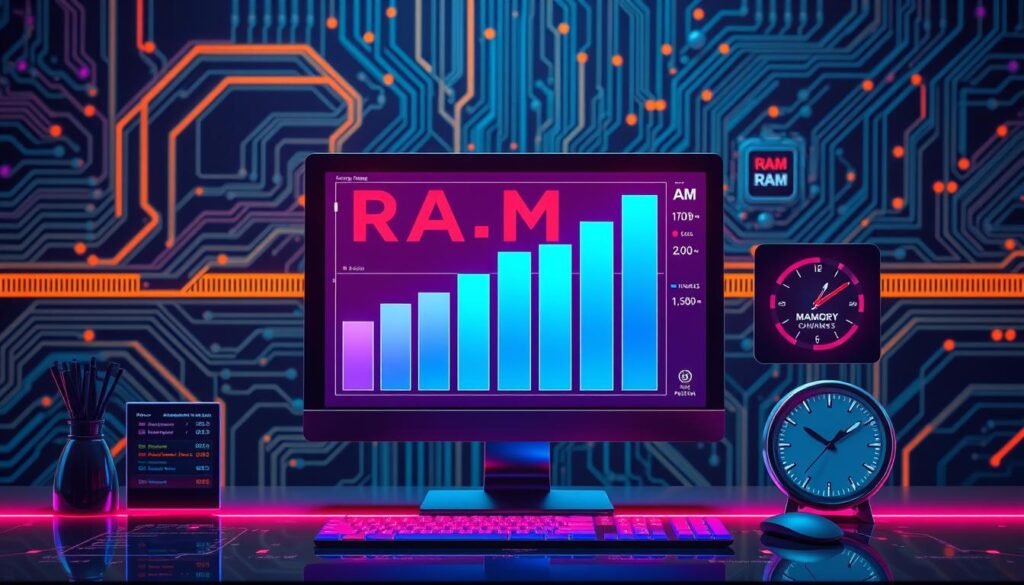
Update Your Software and Drivers
Keeping your computer’s software and drivers updated is key to freeing up RAM. This step also boosts your system’s performance. Old software and drivers use more RAM, so updating them is vital.
Software updates make programs run better, using less RAM. Regular updates keep your computer running smoothly. This frees up RAM for other tasks.
Driver updates are also crucial. Bad drivers can slow down your system and use more RAM. Keeping your drivers current helps manage RAM better and improves performance.
To update, use your computer’s built-in tools or visit the manufacturer’s site. Updating your system is a simple way to improve performance and free up RAM.
| Reason | Benefit |
|---|---|
| Outdated software and drivers require more RAM | Software and driver updates optimize RAM usage and improve performance |
| Faulty drivers can negatively impact RAM and stability | Updating drivers enhances RAM management and system stability |
| Software updates include performance optimizations | Optimized software runs more efficiently, reducing memory footprint |
Updating your software and drivers unlocks your computer’s RAM potential. This leads to a smoother, more responsive experience. The role of software updates in managing RAM is very important.
Disable Unnecessary Startup Programs
One of the easiest ways to free up RAM and improve your computer’s performance is by disabling unnecessary startup programs. Many programs are set to automatically launch when your computer boots up, even if you don’t use them regularly. These startup programs can consume valuable RAM in the background without your knowledge, slowing down your system.
Identifying and Disabling Startup Programs
To manage your startup apps and free up RAM, follow these steps:
- Open the Task Manager by pressing Ctrl + Shift + Esc or right-clicking on the taskbar and selecting “Task Manager”.
- Click on the “Startup” tab to see a list of all the programs that are set to launch automatically when your computer starts up.
- Review the list and identify any programs you don’t use regularly or need to have running in the background. These are the programs you should consider disabling.
- To disable a startup program, right-click on it and select “Disable”. This will prevent the program from launching automatically, freeing up RAM for other tasks.
By disabling startup programs to free up RAM and managing startup apps for better RAM usage, you can significantly improve your computer’s performance and speed up the boot-up process.
“Having many startup items can slow down the boot-up process of Windows, causing the machine to run slower, overheat, and potentially experience performance issues.”
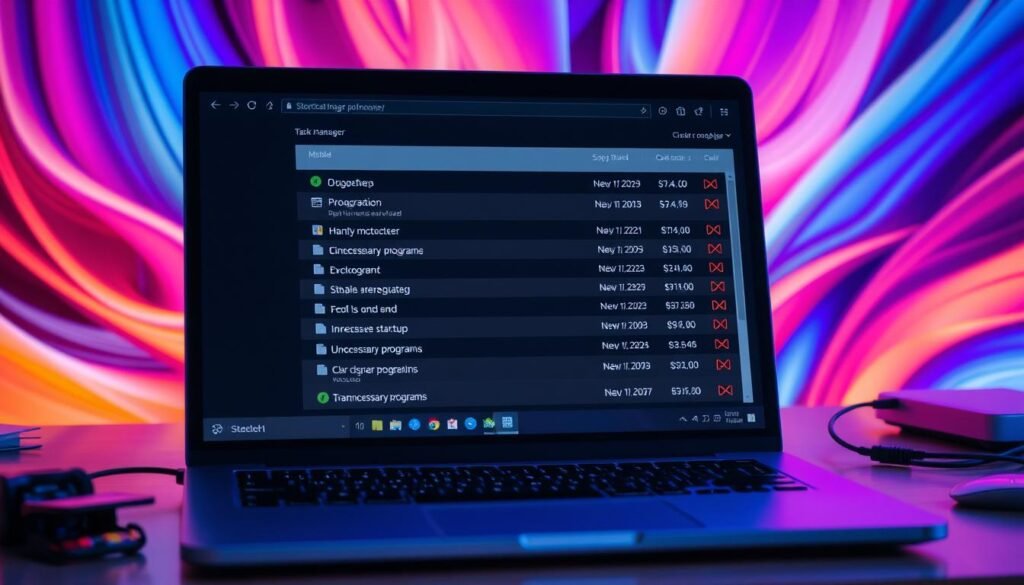
Remember, it’s important to be selective when disabling startup programs. Only disable the ones you’re confident you don’t need, as some may be essential for your computer’s proper functioning. If you’re unsure about a program, it’s best to leave it enabled.
| Operating System | How to Manage Startup Programs |
|---|---|
| Windows 11 | Disable startup programs through Windows Settings or Task Manager |
| Windows 10 | Manage startup apps in Windows Settings or Task Manager |
| Windows 8/8.1 | Change startup programs by using Task Manager |
| Windows 7/Vista/XP | Access and manage startup programs by running MSConfig |
By taking the time to disable startup programs to free up RAM and manage startup apps for better RAM usage, you can enjoy a smoother, faster computing experience and keep your system running at its best.
Clear Browser Cache and Cookies
Clearing your browser cache and deleting cookies can free up RAM on your computer. Your browser’s cache stores temporary files and images to make pages load faster. But, over time, this data can use up a lot of memory, slowing your computer.
To clear your browser’s cache and cookies, follow these steps:
- Open your web browser and navigate to the settings or preferences menu.
- Look for an option to clear your browser’s cache, browsing history, and cookies.
- Select the timeframe you want to clear, such as the last hour, day, week, or all time.
- Ensure that the “cached files and images” and “cookies and other site data” options are checked, then click the “Clear” or “Delete” button.
Regularly clearing your browser’s cache and cookies can improve your computer’s performance. This simple action can make web pages load faster and your computer run smoother.
“Clearing your browser cache and cookies is like giving your computer a fresh start – it can significantly boost its performance and responsiveness.”
You can also use RAMMap from Microsoft to manage your computer’s memory. This tool helps you find and free up more RAM, improving your system’s performance.
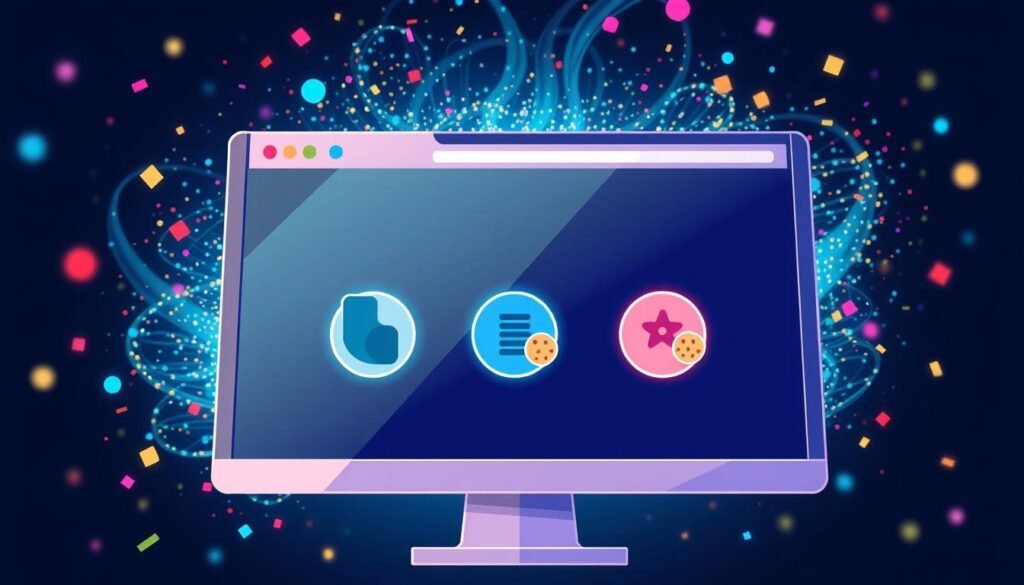
By clearing your browser cache and cookies and using tools to manage memory, you can make your system faster and more responsive. This simple step is key to keeping your computer healthy and efficient.
Uninstall Unused Programs and Extensions
Your computer might slow down if you have unused programs. These programs use up RAM, even when not in use. To speed up your computer, find and remove any programs you don’t need.
Removing Unnecessary Programs
Open your task manager or control panel to see all installed programs. Look at each one and decide if you still need it. If you haven’t used a program in months or years, it’s likely safe to remove it. This will free up RAM and make your system faster.
Disabling Browser Extensions
Browser extensions can also use up RAM. Each one needs extra memory to work. To free up RAM and enhance your browsing experience, check your extensions. Disable any you don’t use often.
- Uninstall unused programs to free up RAM and improve your computer’s performance.
- Disable browser extensions that you don’t actively use to manage RAM more efficiently.
- Regularly review and remove browser add-ons to enhance system performance.
“Freeing up RAM by uninstalling unused programs and disabling unnecessary browser extensions can make a significant difference in your computer’s speed and responsiveness.”
Reduce Visual Effects
Visual effects and animations on your computer can eat up a lot of RAM. If you want your computer to run faster, try turning off these effects. This means no animations, transparency, or other fancy graphics.
By doing this, you can make your computer run smoother. You’ll get better performance and enjoy using your computer more.
On Windows 10, go to System Properties and click “Advanced.” Then, choose “Settings” under “Performance.” Here, you can turn off things like transparency and animations. Find the right mix of looks and speed for you.
Mac users can go to Energy Saver and pick “Reduce motion.” You can also turn off transparency and parallax effects in Accessibility settings. Managing your computer’s graphics helps free up RAM and boosts performance.
- Turn off animations and transparency effects
- Disable unnecessary visual enhancements
- Prioritize performance over visual polish
- Adjust settings in the System Properties or Energy Saver preferences
By following these steps, you can turn off visual effects to free up ram and manage computer graphics for better ram usage. Your computer will run better and faster, making your experience more enjoyable.
“Reducing visual effects can have a significant impact on your computer’s performance, freeing up valuable RAM and improving overall system responsiveness.”
Use Optimization Software
Optimization software is a simple way to boost your computer’s RAM. These tools find and fix RAM problems automatically. They watch how much RAM you’re using and get rid of apps that use too much.
This makes your computer run faster and smoother. It’s great for getting more done without waiting.
Advantages of Using Optimization Tools
Using optimization software to free up RAM has many benefits. It saves you time by finding and fixing RAM issues for you. This lets you focus on what you want to do, whether it’s work or play.
These tools make your computer better at handling many tasks at once. Your apps will run smoother, and your system will be more responsive. It’s all about making your computer work better for you.
- Real-time RAM monitoring and optimization
- Automatic elimination of resource-intensive background processes
- Enhanced system stability and responsiveness
- Seamless integration with your existing software and hardware
- Improved productivity and user experience
Using RAM management tools does more than just free up RAM. They also find and fix other performance problems. This ensures your computer runs at its best.
With these advanced tools, you can make your computer work its best. Enjoy a fast and efficient computing experience.
“Optimization software has been a game-changer for me. It’s like having a personal assistant that tunes up my computer on a regular basis, keeping it running at its best.”
Conclusion
We’ve looked at many ways to free up RAM and make your computer faster. You can start by restarting your device and closing apps you don’t use. Or, you can try more advanced methods like disabling startup programs and updating your software.
These steps will help your computer run smoothly, whether you’re working, playing games, or doing something that uses a lot of memory. A well-optimized system not only makes your work easier but also helps your hardware last longer. So, use these tips to make your computer work better.
Now you know how to keep your computer running well. You’ve got the knowledge to keep your system fast and efficient. Let’s keep finding ways to make your computer even better!
